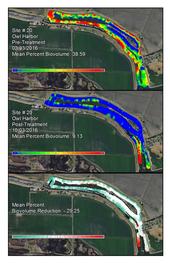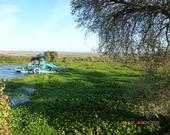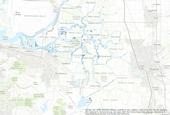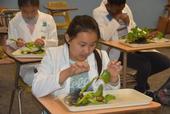- Author: Micheal Finnell
- Editor: Guy B Kyser

Micheal Finnell is an Environmental / GIS Assistant with California State Parks Division of Boating and Waterways.
OBJECTIVES
To provide quantitative metrics of herbicide treatment efficacy for the Division of Boating and Waterways' Submersed Aquatic Vegetation (SAV) Program
- Apply consumer-grade echosounders to map SAV in the Sacramento-San Joaquin Delta
- Process sonar files using Biobase, an online GIS algorithm
- Generate SAV geo-spatial products and change detection using the SAV Efficacy Tool
- Conduct qualitative Biobase accuracy assessment
BACKGROUND
Submersed aquatic vegetation...
- Author: Angela Llaban
- Author: Jose Martinez
- Editor: Guy B Kyser

Controlling invasive aquatic plants such as waterhyacinth, South American spongeplant, and waterprimrose in the Sacramento-San Joaquin Delta is no easy task. To address these species of floating aquatic vegetation (FAV), the California Department of Parks and Recreation, Division of Boating and Waterways (DBW) implements an integrated pest management program using a combination of chemical and mechanical control methods.
Historically, herbicide treatment was the primary tool used by DBW to control FAV. Starting in 2013, mechanical harvesting of FAV was integrated into DBW's control program. By 2016, DBW was able to conduct mechanical harvesting almost continuously throughout the year in various locations of the...
- Author: Julie Hopper
- Editor: Guy B Kyser

What if you could reduce cover and biomass of invasive aquatic weeds, such as waterhyacinth, all while sitting back with a glass of lemonade and watching nature do its job? No herbicides, no mechanical control, and no clogged up marinas or waterways. Bonus part is that this control scheme ideally lasts forever. Sounds pretty good, right? Well, this is the idea behind biological control.
In classical biological control, a pest's natural enemies (for example, waterhyacinth insect herbivores) are collected from its geographic center of origin and released into the invaded region. Successful biocontrol agents can reduce pest populations below threshold levels that cause problems for humans and native species. Once established,...
- Author: Christopher Potter
- Editor: Guy B Kyser

Scientists at NASA Ames have created a new computer model to simulate the growth and decay of floating aquatic invasive plants, such as water hyacinth and water primrose, on Delta waterways. The model is used to estimate biomass levels throughout the year. DRAAWP investigators Christopher Potter and Vanessa Genovese are developing the model within a mapping application (or GIS program) to extend the invasive species coverage area to the entire Bay and Delta. The growth of these species is controlled in the model primarily by temperature, salinity, water flow rates, and water nutrient contents.
This project is conducted in collaboration with the Delta Region Areawide Aquatic Weed Project (
- Author: Julie V. Hopper
- Editor: Guy B Kyser

On a bright Saturday morning, girls ages 10-16 started tearing apart water hyacinth plants, some with exclamations of disgust, and others filled with joyful excitement.
Here, on August 13th at the West Contra Costa Boys and Girls Club, I lead a ‘Global Change Biology' workshop for the ‘Greenlight 4 Girls (G4G), Bay Area Event', encouraging young girls to pursue futures in STEM science.
I started the workshop with a discussion of ‘Global Change Biology'. I am sure many of you (just like many of the girls) are very familiar with the term ‘Climate Change'. Global...


